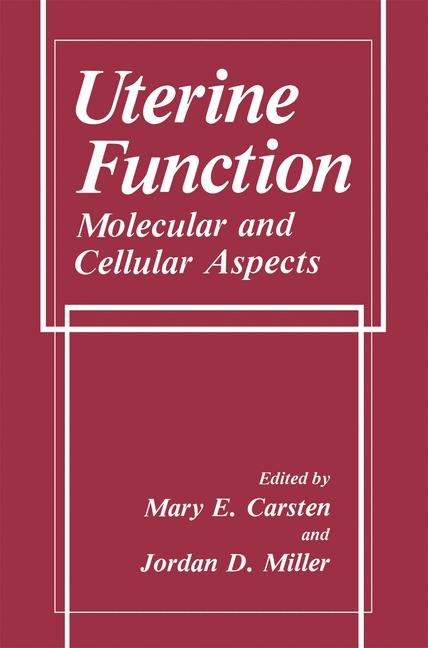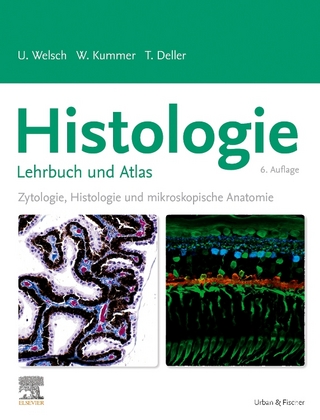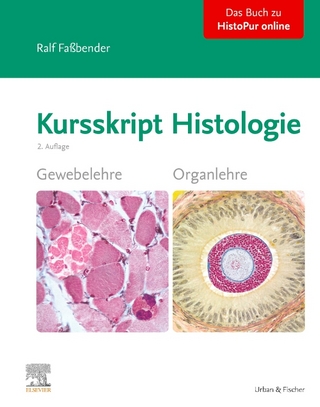
Uterine Function
Kluwer Academic/Plenum Publishers (Verlag)
978-0-306-43446-4 (ISBN)
- Titel ist leider vergriffen;
keine Neuauflage - Artikel merken
The frontispiece, Leonardo da Vinci's drawing of the embryo in the womb, was chosen as a starting point for this book. It was Leonardo who in his notebooks and drawings combined artistic composition and accurate recording of the anatomy of the human body. Leonardo studied human anatomy in order to execute artistic drawings. His aim was to clarify form and function of human organs including reproductive organs. He followed up his extensive research with graphic representa- tion and thereby initiated record keeping as a basis of scientific investigation. His records, accurate three-dimensional drawings, allowed others to reproduce his find- ings and to test for correctness. Results could be updated and refined. Only after these steps can abnormalities be ascertained and defined as pathology. Though Leonardo was both artist and scientist, it is assumed that his anatomic drawings were used to improve his art, and thus scientific endeavor was at the service of his art. Anatomy, the offspring of science and art, is an integration of the two and became an accepted branch of the natural sciences. Although art and science continued to interact throughout the Renaissance, art was often placed in the service of science. In the course of history that followed, art and science in- creasingly followed separate ways.
1. Ultrastructure and Calcium Stores in the Myometrium.- 1. Introduction.- 2. Myometrium.- 3. Smooth Muscle Ultrastructure.- 3.1. Sarcolemma.- 3.2. Contractile Apparatus.- 3.3. Intracellular Structures.- 4. Cellular Calcium Stores.- 4.1. Sarcoplasmic Reticulum.- 4.2. Mitochondria.- 4.3. Sarcolemma.- 5. Conclusions.- References.- 2. Uterine Metabolism and Energetics.- 1. Introduction.- 2. Myometrial Metabolism and Energetics: An Overview.- 2.1. Contraction.- 2.2. Metabolic Recovery.- 2.3. Kinetics, Thermodynamics, and Cellular Compartmentation.- 2.4. Summary.- 3. Methods—Past, Present, and Possible.- 3.1. Noninvasive Methods.- 3.2. Heat Production.- 3.3. Oxygen Consumption.- 3.4. Fluorescence.- 3.5. Nuclear Magnetic Resonance Spectroscopy.- 4. Bioenergetically Important Metabolites in the Uterus.- 4.1. Concentrations of Phosphorus Metabolites.- 4.2. Alterations during Pregnancy and Parturition.- 4.3. Intracellular pH in the Myometrium.- 4.4. Myometrial Free Magnesium.- 4.5. Hormonal Control of Phosphorus Metabolite Levels.- 4.6. Effects of Disease.- 5. In Vivo Control of Function and Metabolism in the Myometrium.- 5.1. Comparison of Phosphorus Metabolites of Myometrium and Striated Muscles.- 5.2. Creatine Kinase.- 5.3. Energetics of Contraction.- 5.4. Economy and Efficiency of Contraction.- 5.5. Metabolism.- 6. Summary and Conclusions.- References.- 3. Myosin Light Chain Phosphorylation in Uterine Smooth Muscle.- 1. Introduction.- 2. Myosin.- 2.1. Historical Notes.- 2.2. Structure and Function.- 2.3. Isolation of Myosin.- 2.4. Myosin—Actin Interaction.- 3. Phosphorylation—Dephosphorylation.- 4. Isoforms of the 20-kDa Light Chain.- 5. Quantitation of Light Chain Phosphorylation.- 6. Light Chain Phosphorylation in Uterine Smooth Muscle.- 6.1. Spontaneous Activity.- 6.2. Drug-Induced Contraction.- 6.3. Drug-Induced Relaxation.- 6.4. Stretch Activation.- 7. Concluding Remarks.- References.- 4. Thin Filament Control of Uterine Smooth Muscle.- 1. Introduction.- 2. Location of Thin Filaments in the Contractile Matrix.- 3. Protein Components of the Thin Filament.- 3.1. Actin.- 3.2. Tropomyosin.- 3.3. Caldesmon.- 3.4. Native Thin Filament.- 4. Function of the Thin Filaments in Uterine Muscle Contraction.- 4.1. Native Thin Filaments plus Myosin.- 4.2. Actin plus Myosin.- 4.3. Actin—Tropomyosin plus Myosin.- 4.4. Actin—Tropomyosin—Caldesmon plus Myosin.- 4.5. Actin—Tropomyosin—Caldesmon with Calmodulin plus Myosin.- 4.6. The Ca2+-Binding Component of Native Thin Filaments.- 5. A Consensus Model for the Ca2+ Regulatory Mechanism in Smooth Muscle Thin Filaments.- 6. Physiological Role for Ca2+ Regulation of Thin Filaments.- 7. Conclusion.- References.- 5. Calcium Control Mechanisms in the Myometrial Cell and the Role of the Phosphoinositide Cycle.- 1. From Excitation to Contraction.- 2. Calcium as Activator of Contraction.- 2.1. Intracellular Calcium.- 2.2. Sources of Calcium and Calcium Transport.- 3. Uterine Muscle-Specific Problems.- 3.1. Microsomal Preparations.- 3.2. Criteria for Purity.- 3.3. Specific Markers.- 3.4. Molecular Parameters.- 4. Calcium Pumps and Relaxation.- 4.1. Plasma Membrane.- 4.2. Sarcoplasmic Reticulum.- 5. Rise of Intracellular Calcium and Contraction.- 5.1. Calcium Entry from the Extracellular Fluid.- 5.2. Calcium Release Mechanisms from the Sarcoplasmic Reticulum...- 5.3. Hormonal Effects on Intracellular Calcium Storage.- 5.4. Inhibition of Calcium Efflux.- 6. Pharmacomechanical Coupling.- 7. The Phosphoinositide System and Release of Second Messengers.- 7.1. Occurrence, Structure, and Metabolism.- 7.2. Inhibitors of the Phosphoinositide Cycle.- 7.3. Biological Function of the Phosphoinositides.- 7.4. Other Inositol Phosphates.- 7.5. Diacylglycerol.- 7.6. The Regulatory Role of Guanine Nucleotides.- 8. Summary and Conclusions.- References.- 6. Calcium Channels: Role in Myometrial Contractility and Pharmacological Applications of Calcium Entry Blockers.- 1. Introduction.- 2. Calcium Channels.- 2.1. General Properties.- 2.2. Selectivity.- 2.3. Channel Type.- 2.4. Modulation of Calcium Channels.- 3. Calcium Entry Blockers.- 3.1. Localization of Ligand Binding Sites.- 3.2. Characterization of Ligand Binding Sites.- 3.3. Alternative Sites of Action.- 3.4. Pharmacology.- 3.5. Pharmacokinetics.- 4. Effects of Calcium Entry Blockers on the Female Genital Tract.- 4.1. In Vitro Studies.- 4.2. In Vivo Studies.- 5. Summary.- References.- 7. The Role of Membrane Potential in the Control of Uterine Motility.- 1. Introduction.- 2. Origins of Membrane Potential.- 2.1. Generation of Ionic Gradients.- 2.2. Distribution of Ions in Smooth Muscle.- 2.3. Equilibrium Potentials in Smooth Muscle.- 3. Membrane Permeability and Passive Electrical Properties.- 3.1. Membrane Permeability.- 3.2. Passive Electrical Properties.- 3.3. Effect of Reproductive State on Passive Electrical Properties.- 4. Changes in Membrane Permeability and Active Responses.- 4.1. Mechanism of Ion Permeation.- 4.2. Excitability.- 4.3. Ion Channels in Smooth Muscle.- 4.4. Modulation of Channel Activity.- 5. Electrical Activity in the Myometrium.- 5.1. Pacemaker Potentials.- 5.2. Simple Action Potentials.- 5.3. Complex Action Potentials.- 5.4. Relationship between Membrane Potential and Contraction.- 5.5. Factors Affecting the Action Potential.- 6. Spread of Excitation.- 6.1. The Syncytial Nature of Smooth Muscle and Cell-to-Cell Coupling.- 6.2. Spread of Activity throughout the Uterus.- 7. Studies in Vivo.- 7.1. Pattern of Activity throughout Pregnancy.- 7.2. Comparison between Observations in Vivo and in Vitro.- 8. Concluding Remarks.- References.- 8. ?-Adrenoceptors, Cyclic AMP, and Cyclic GMP in Control of Uterine Motility.- 1. ?-Adrenoceptors and Cyclic AMP in Uterine Relaxation.- 1.1. Adrenergic Receptors in the Uterus.- 1.2. Coupling of Adrenergic Receptors to Adenylate Cyclase.- 1.3. Evidence for and against a Role for cAMP as a Mediator of Uterine Relaxation.- 2. Role of Cyclic GMP in Control of Uterine Motility.- 2.1. Cyclic GMP as a Possible Mediator of Uterine Contraction.- 2.2. Cyclic GMP as a Possible Mediator of Uterine Relaxation.- 3. Use of ?-Adrenoceptor Agonists in Premature Labor.- 4. Summary and Conclusions.- 4.1. ?-Adrenoceptors and cAMP in Uterine Relaxation.- 4.2. Role of cGMP in Control of Uterine Motility.- 4.3. Use of ? -Adrenoceptor Agonists in Premature Labor.- References.- 9. Physiological Roles of Gap Junctional Communication in Reproduction.- 1. Introduction.- 2. Functional Implications of Junctional Communication.- 3. Structural and Functional Studies of Uterine Gap Junctions.- 3.1. Uterine Endometrium.- 3.2. Uterine Myometrium.- 3.3. Uterine Serosal Epithelium.- 4. Conclusions.- References.- 10. Molecular Mechanisms of Steroid Hormone Action in the Uterus.- 1. Introduction.- 2. Historical Perspective.- 3. Biochemical Studies.- 3.1. Receptor Proteins in Target Cells.- 3.2. Receptor Transformation.- 3.3. Intracellular Localization.- 3.4. Current Status of the “Two-Step” Mechanism.- 3.5. Receptor Phosphorylation.- 4. Immunochemical Studies.- 4.1. Antibodies to Estrogen Receptor.- 4.2. Antibodies to Progestin Receptor.- 5. Molecular Biological Studies.- 5.1. Receptor Cloning and Structure.- 5.2. Interaction with Target Genes.- 6. Summary.- References.- 11. Oxytocin in the Initiation of Labor.- 1. Synthesis and Secretion of Oxytocin.- 2. Oxytocin in Animal Parturition.- 3. Maternal Oxytocin in Human Parturition.- 3.1. Plasma Oxytocin Levels.- 3.2. Oxytocin Plasma Clearance Rate.- 3.3. Oxytocin in the Corpus Luteum.- 3.4. Cerebrospinal Fluid Oxytocin.- 3.5. Labor in Hypophysectomized Women.- 3.6. Labor Facilitation by Oxytocin.- 4. Special Considerations in Measuring Plasma Oxytocin.- 5. Placental Transfer of Oxytocin.- 6. Fetal Oxytocin in Labor.- 6.1. Fetal Oxytocin in Animal Parturition.- 6.2. Fetal Oxytocin in Human Parturition.- 7. Conclusion.- References.- 12. Oxytocin Receptors in the Uteru.- 1. Introduction.- 2. The Relationship between Sensitivity and Oxytocin Receptors.- 3. Criteria for Oxytocin Binding Sites Being Receptors.- 4. Methods for Determining Oxytocin Receptor Concentrations.- 5. Myometrial Oxytocin Receptor Regulation.- 5.1. Steroids.- 5.2. Metal Ions and Oxytocin Action.- 5.3. Oxytocin Analogues and Metal Ions.- 6. Distinct Vasopressin and Oxytocin Receptors in the Myometrium of Nonpregnant Women.- 7. Characterization of Oxytocin Binding Sites.- 7.1. Solubilization of Oxytocin Receptors.- 7.2. Information Gained from the Use of Oxytocin Analogues.- 8. Coupling between Oxytocin-Receptor Occupancy and Cell Contraction.- 8.1. Calcium.- 8.2. Calcium, Magnesium ATPase.- 8.3. Phosphoinositol Metabolism.- 8.4. Lack of Evidence for Involvement of a G Protein.- 9. Endometrium.- 9.1. Endometrial Oxytocin Receptors.- 9.2. Effects of Oxytocin on Endometrial Prostaglandin Synthesis.- 10. Concluding Remarks.- References.- 13. Regulatory Peptides and Uterine Function.- 1. Introduction.- 2. Peptide Biosynthesis.- 3. Vasoactive Intestinal Peptide and Peptide with N-Terminal Histidine and C-Terminal Isoleucine Amide.- 3.1. Localization.- 3.2. Biological Action.- 3.3. Functional Significance.- 4. Neuropeptide Y.- 4.1. Localization.- 4.2. Biological Action.- 4.3. Physiological Implications.- 5. Substance P.- 5.1. Localization.- 5.2. Biological Action.- 5.3. Physiological Implications.- 5.4. Labor.- 6. Enkephalins: Leu- and Met-Enkephalin.- 6.1. Localization.- 6.2. Biological Action.- 7. Calcitonin-Gene-Related Peptide.- 7.1. Localization.- 7.2. Biological Action.- 8. Galanin.- 9. Oxytocin, Vasopressin, Renin, and Relaxin.- 10. Somatostatin.- 11. Conclusion and Perspectives.- References.- 14. Biosynthesis and Function of Eicosanoids in the Uterus.- 1. History of Prostaglandins.- 2. Isolation and Structure of Prostaglandins.- 3. Arachidonic Acid Metabolism.- 4. Cyclooxygenase Pathways of Arachidonic Acid Metabolism.- 4.1. Prostacyclin.- 4.2. Thromboxanes.- 4.3. Prostaglandins D2, E2, and F2a.- 5. Lipoxygenase Pathways of Arachidonic Acid Metabolism.- 6. Control of Eicosanoid Biosynthesis in the Uterus.- 6.1. Control of Prostaglandin Biosynthesis in the Uterus.- 6.2. Synthesis of Lipoxygenase Products by the Uterus.- 7. Prostaglandin and Leukotriene Receptors.- 8. Prostaglandin Contractile Action on the Cellular Level.- 9. Prostaglandin and Oxytocin Interaction.- 10. Role of Prostaglandins in Tubal Motility.- 11. Role of Prostaglandins and Leukotrienes as Mediators of Decidualization.- 12. Prostaglandins and the Intrauterine Contraceptive Device.- 13. Menorrhagia.- 14. Prostaglandins and Endometriosis.- 15. Cervical Ripening.- 16. Conclusion.- References.- 15. Pharmacological Application of Prostaglandins, Their Analogues, and Their Inhibitors in Obstetrics.- 1. Introduction.- 2. Termination of Pregnancy.- 2.1. Mechanism.- 2.2. Early Pregnancy Termination.- 2.3. Midtrimester Pregnancy Termination.- 2.4. Pregnancy Termination in Abnormal Pregnancy.- 2.5. Current Use of Prostaglandins.- 2.6. Cervical Priming.- 3. Term Cervical Ripening and Induction of Labor.- 3.1. Physiological Background.- 3.2. Prostaglandin E2 for Cervical Ripening.- 3.3. Prostaglandin E2 Preparations for Local Application.- 3.4. Present Status of PGE2 Use for Induction of Labor.- 4. Postpartum Hemorrhage.- 4.1. Use of PGF2?.- 4.2. Use of Analogues of PGF2a.- 4.3. Use of PGE2.- 5. Inhibition of Preterm Labor with Prostaglandin Synthetase Inhibitors.- 5.1. Efficacy of Indomethacin.- 5.2. Side Effects of Indomethacin.- 6. Conclusions.- References.- 16. Fetal Tissues and Autacoid Biosynthesis in Relation to the Initiation of Parturition and Implantation.- 1. Introduction.- 2. Autacoids in Amniotic Fluid.- 2.1. Prostaglandins.- 2.2. Platelet-Activating Factor.- 3. Tissue Origins of Autacoids Found in Amniotic Fluid in Association with Parturition.- 3.1. Fetal Membranes.- 3.2. Other Fetal Tissues as Sources of PAF and Prostaglandins.- 4. Enzymatic Synthesis and Degradation of Autacoids during Parturition.- 4.1. Biosynthesis of Prostaglandins in Fetal Membranes.- 4.2. Biosynthesis of PAF in Amnion Tissue.- 4.3. Biosynthesis of PAF in Fetal Lung.- 4.4. Maternal Plasma PAF AcetyIhydrolase Activity.- 5. Regulation of Autacoid Production during Parturition.- 5.1. Calcium.- 5.2. Positive and Negative Effectors.- 5.3. Cyclic AMP.- 6. Functional Significance of Autacoid Production during Parturition.- 6.1. Myometrial Contraction.- 6.2. Lung Maturation.- 6.3. Preterm Labor.- 7. Early Pregnancy.- 8. Conclusion.- References.- 17. Endocrinology of Pregnancy and Parturition.- 1. Overview.- 2. Hypotheses.- 3. Endocrinology of Pregnancy and Parturition in Sheep.- 4. Endocrinology of Pregnancy and Parturition in Women.- 4.1. Introduction.- 4.2. The Human Fetal Adrenal.- 4.3. Estrogen.- 4.4. Progesterone.- 5. Endocrinology of the Fetal-Maternal Organ Communication System.- References.- 18. Circulation in the Pregnant Uterus.- 1. Vascular Anatomy.- 1.1. Nonpregnant.- 1.2. Pregnant.- 1.3. Experimental Animals.- 2. Methods for Study of Uterine Circulation and Blood Flow in the Human.- 2.1. Total Uterine Blood Flow.- 2.2. Placental Blood Flow.- 2.3. Other Methods.- 3. Physiology of Uterine Circulation.- 3.1. Neural Control.- 3.2. Autoregulation.- 3.3. Labor and Delivery.- 3.4. Hormonal Effects.- 4. Pathophysiology.- 4.1. Growth Retardation.- 4.2. Effects of Position.- 4.3. Hypertension.- 4.4. Smoking.- 4.5. Recreational Drugs.- 4.6. Exercise.- 5. Conclusions.- References.- 19. Effects of Obstetric Analgesia and Anesthesia on Uterine Activity and Uteroplacental Blood Flow.- 1. Introduction.- 1.1. Pressure—Flow Relationship of the Uterine Vascular Bed.- 1.2. Adrenergic Influences on Uterine Blood Flow and Uterine Activity.- 1.3. The Influence of Pregnancy and Labor on Sympathetic Nervous System Activity.- 1.4. Neural Reflexes and Uterine Activity.- 1.5. Influence of Maternal Respiratory and Acid-Base Status on Uterine Blood Flow.- 2. Local Anesthetics and Regional Analgesia.- 2.1. Direct Effects of Local Anesthetics on Uterine Activity and Uterine Blood Flow.- 2.2. Effects of Local Anesthetics Used for Pain Relief on Uterine Activity and Uterine Blood Flow.- 3. General Anesthesia and Sedation.- 3.1. Inhalation Anesthetics.- 3.2. Barbiturates.- 3.3. Ketamine.- 3.4. Narcotics.- 3.5. Sedative Tranquilizers.- 3.6. Neuromuscular Blocking Agents.- 3.7. Antihypertensive Agents.- 4. Summary.- References.
| Erscheint lt. Verlag | 30.6.1990 |
|---|---|
| Zusatzinfo | XXIII, 605 p. |
| Verlagsort | New York |
| Sprache | englisch |
| Gewicht | 1060 g |
| Themenwelt | Medizin / Pharmazie ► Medizinische Fachgebiete ► Gynäkologie / Geburtshilfe |
| Studium ► 1. Studienabschnitt (Vorklinik) ► Histologie / Embryologie | |
| ISBN-10 | 0-306-43446-6 / 0306434466 |
| ISBN-13 | 978-0-306-43446-4 / 9780306434464 |
| Zustand | Neuware |
| Haben Sie eine Frage zum Produkt? |
aus dem Bereich


